Invented by Matthew LeRoy Mengel, Douglas Mark Latreille, Dan G. Siegel, Amcor Flexibles North America Inc
The demand for high-quality meat products has been on the rise, driven by factors such as increasing disposable income, changing dietary preferences, and a growing awareness of the importance of protein-rich diets. As a result, meat producers and retailers are constantly looking for innovative ways to improve the shelf life and visual appeal of their products.
Packaging inserts containing myoglobin-blooming agents have emerged as a popular solution in the meat industry. These inserts are typically small sachets or pads that are placed inside the packaging of meat products. They release the myoglobin-blooming agents, which react with the meat’s myoglobin protein, enhancing its red color and preventing discoloration.
One of the key advantages of using packaging inserts is that they are easy to use and require minimal changes to existing packaging processes. Meat producers can simply insert the sachets or pads into the packaging before sealing it, ensuring that the myoglobin-blooming agents are in direct contact with the meat. This method is cost-effective and does not require any additional equipment or machinery.
Furthermore, packaging inserts offer a more sustainable solution compared to other packaging methods. By enhancing the visual appeal of the meat, these inserts help reduce food waste. Consumers are more likely to purchase meat products that look fresh and appetizing, leading to fewer products being discarded due to their appearance.
The market for packaging inserts containing myoglobin-blooming agents is expected to witness significant growth in the coming years. The rising demand for high-quality meat products, coupled with the need for longer shelf life and improved visual appeal, will drive the adoption of these inserts across the meat industry.
In addition to myoglobin-blooming agents, packaging materials and methods of packing also play a crucial role in preserving the freshness and quality of meat products. Vacuum packaging, for instance, is a widely used method that removes air from the packaging, reducing the risk of spoilage and extending the shelf life of the meat.
Other innovative packaging materials, such as modified atmosphere packaging (MAP), are also gaining traction in the market. MAP involves replacing the air inside the packaging with a mixture of gases that inhibit the growth of bacteria and maintain the freshness of the meat. This method has proven to be effective in preserving the quality of meat products, especially in the case of pre-packaged meats.
In conclusion, the market for packaging inserts containing myoglobin-blooming agents, packaging, and methods of packing is witnessing significant growth due to the increasing demand for high-quality meat products. These inserts, along with innovative packaging materials and methods, help enhance the visual appeal and shelf life of meat, reducing food waste and meeting consumer expectations. As the meat industry continues to evolve, it is expected that more advancements in packaging technology will emerge, further improving the quality and freshness of meat products.
The Amcor Flexibles North America Inc invention works as follows
Food packaging inserts containing a myoglobin-blooming agent to promote or preserve the desired appearance of food packages and food products are provided.
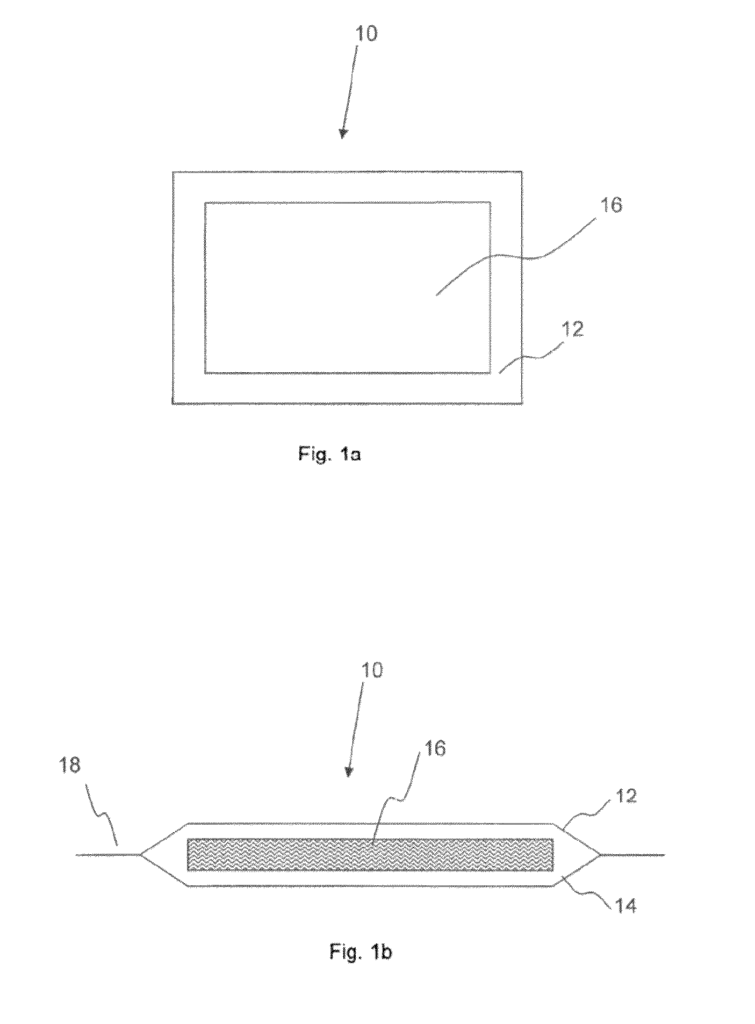
Background for Packaging inserts containing myoglobin-blooming agents, packaging and methods of packing
Meat color is a quality characteristic that impacts the marketability of packaged meat products. Color is often used by consumers to determine the quality and freshness of meat. The amount of myoglobin and its chemical state in meat determines the color. Myoglobin, which is found in all animal muscle tissue, stores and delivers oxygen to the mitochondria by binding molecule oxygen reversibly. Pork and chicken contain less myoglobin and are therefore lighter than beef.
Myoglobin contains an open binding site, called heme, that can bind small molecules such as molecule oxygen (O2 or “oxygen”? “Myoglobin includes an open binding site called heme that can bind certain small molecules, such as molecular oxygen (O2 or?oxygen? Deoxymyoglobin is the purple-colored molecule that myoglobin looks like when it doesn’t have a molecule attached to the heme. The type and amount of ligands bound to the myoglobin-binding site can affect the color of myoglobin. The amount of myoglobin and type of ligand molecules bound to the binding site of heme will affect the color of the product. The heme group is easily bound by molecule oxygen, allowing oxygen to be transported from the bloodstream to mitochondria in the cells. When oxygen binds the heme pockets, purple deoxymyoglobin turns into oxymyoglobin which is characterized by its red color. The myoglobin turns brown when a water molecule is bound to the heme groups. This is called metmyoglobin. Binding of carbon monoxide can produce a similar red color to oxygen binding. When nitric oxide (NO) is bonded to the heme groups, it has been described that cured meat will have a pink color.
Historically, the fresh meat products that consumers can purchase have been prepared and packaged primarily for use at the final sale site. Packaging that maintains the color of fresh beef can increase the appeal and merchantability of the product to consumers. The current meat packaging technology may not be able to preserve the desired color of meat for a variety of reasons. Retailers use a conventional packaging format for fresh meat that involves stretching a thin film of plastic around a foam tray to support the product. The film allows oxygen to pass through, allowing the meat to quickly turn a vibrant red. The bright red color has a shelf life of only three days. This packaging format is not desirable because the color is often unacceptable before the product is sold, even though it remains healthy and nutritious for consumption. For centralized packaging, it has been long sought after a packaging format which maintains fresh meat color over a longer time period. As an alternative, meat is packaged in vacuum bags that are oxygen barrier and vacuum sealed to prevent oxygen from contacting the meat before the package has been opened. The vacuum sealed red meats are healthy, nutritious and have a longer shelf life. However, they can result in an unattractive purple color of the meat in the packaging that doesn’t turn into a red color when exposed to air. The consumer accepts meat with a purple hue less than meat that is red. In order to provide the red color that consumers prefer, meat is packaged in a modified-atmosphere package (?MAP?) The meat is kept in a sealed pouch containing a different atmosphere than ambient air. One such MAP that is commercially acceptable contains an oxygen-enriched atmosphere (up to 80% volume) in order to maintain the desired red color. A MAP that is ready for use maintains the meat in a carbon dioxide atmosphere with low oxygen levels until the display, when it is exposed to oxygen. This causes the meat to bloom to the desired color. The meat can also be exposed to a MAP containing a low concentration of CO (e.g. 0.4% by volume), in order to maintain the desired red color. While MAP containing CO may have a shelf-life comparable to vacuum packed meat, the color of the meat induced by CO can appear “unnaturally” red. Bright red. The red color that is produced by CO also tends to penetrate a large portion of the product, creating a permanent “pinking” The interior of meat can remain pink even after it has been fully cooked. Carboxymyoglobin is the bright red CO-myoglobin compound. Carbon monoxide may also negatively impact the sales of MAP packages containing CO.
A concern with packaging that uses modified atmosphere is that the surfaces of meat products not exposed to modified atmosphere may not retain the color preferred of fresh meat. Surfaces of meat that are not exposed to modified atmospheres may retain deoxymyoglobin and its characteristic color. When the package is opened, meat cuts will have both red and violet colors. This is not appealing to consumers. “What is needed are packaging and products that maintain the color of fresh beef on all the surfaces of the packaged cut of meat, and also ensure a consistent color after cooking.
Meat surfaces that are not exposed to modified atmospheres include surfaces covered with packaging inserts, such as absorbent patches or puncture-resistant patches. In packaged meat products, absorbent pads like soaker pads can be used to absorb liquids which could create an unsanitary atmosphere and an unfavorable look. To prevent sharp parts of the product such as bones from puncturing packaging, they use puncture-resistant patches. This can compromise the contents, cause an unsanitary environment and create a bad appearance. Packaging inserts are needed to maintain the color of fresh beef on the surface of the packaged meat cut that they cover or protect.
In a first embodiment a packaging insert is provided for packaging meat products, comprising first layer containing a myoglobin-blooming agent. The packaging insert has a smaller size than the package of meat products into which it will be inserted. At least a part of the insert comes in contact with meat product. In some cases, the packaging insert can also include a second and, in other aspects, even a third layer. Layers may include a meat-contact layer and a polymeric, non-woven, paper, absorbent, or water-soluble material. One or more of the layers can be impermeable to liquids or permeable.
In a second embodiment a packaged product comprising a raw meat product and an insert is provided. The packaging insert includes a first layer containing a myoglobin-blooming agent chosen from a group of nitrogen heterocycles and nitric dioxide donating compounds. The packaging insert has a smaller size than the package of the meat product into which it will be inserted. At least a part of the insert comes in contact with the product. The packaged meat product may also include a container that is made of a polymeric web with an oxygen barrier polymeric and food contact layers.
In a third embodiment it is possible to package a meat product in a way that will promote or preserve its appearance. The method includes supplying a container having a polymeric layer with an oxygen barrier layer, providing a fresh meat product containing myoglobin and having a minimum water content of 5 weight percent, and providing a packaging plug comprising the first layer of a myoglobin blossoming agent chosen from nitric-oxide donating compound, nitrogen heterocycles and sulfur monoxide donating compound. The packaging insert has a smaller size than the container into which it will be inserted, and a portion is in direct contact with the fresh meat product containing myoglobin. The method may also include removing oxygen surrounding the myoglobin containing fresh meat products; and storing them in an oxygen-free environment for enough time to achieve the desired color.
BRIEF DESCRIPTION ABOUT CERTAIN VIEWS OF THE DRAWINGS.
FIG. “FIG.
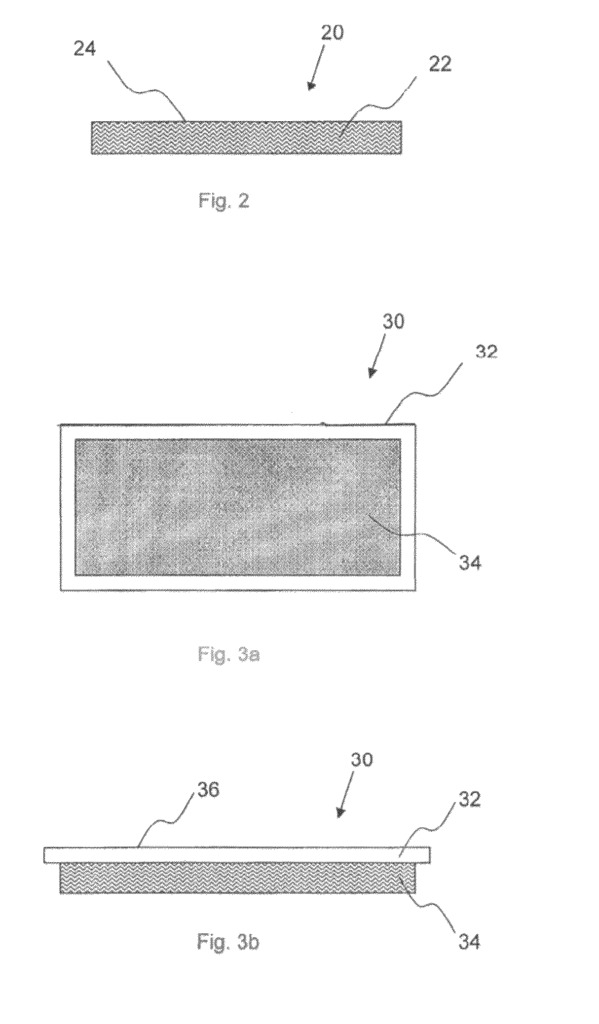
FIG. “FIG. 1 a.
FIG. “FIG.
FIG. “FIG.
FIG. “FIG. 3 a.
FIG. “FIG.
FIG. “FIG.
FIG. “FIG.
FIG. “FIG.
FIG. “FIG.
FIG. “FIG.
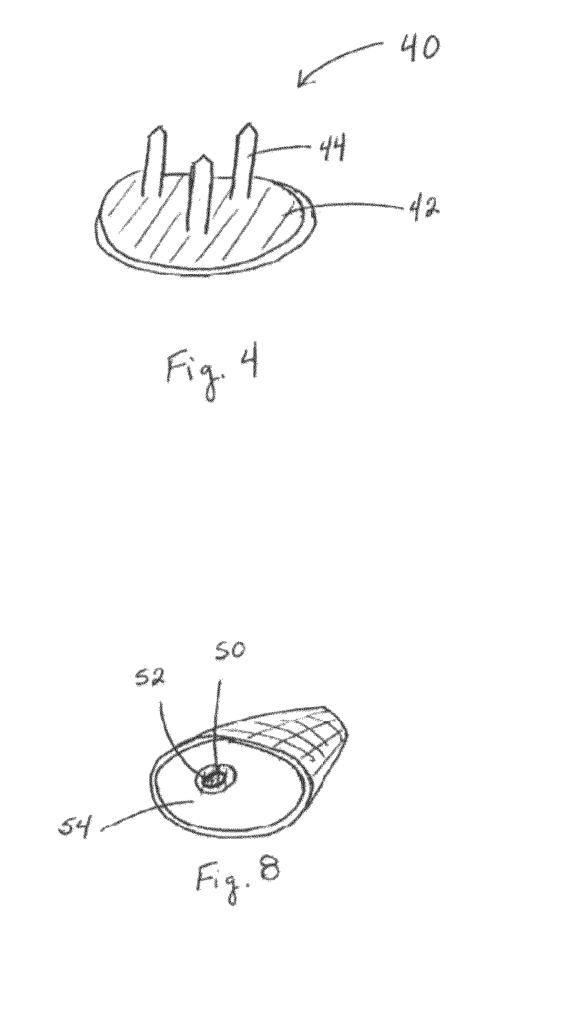
FIG. “FIG. 9 taken along lines 91-91.
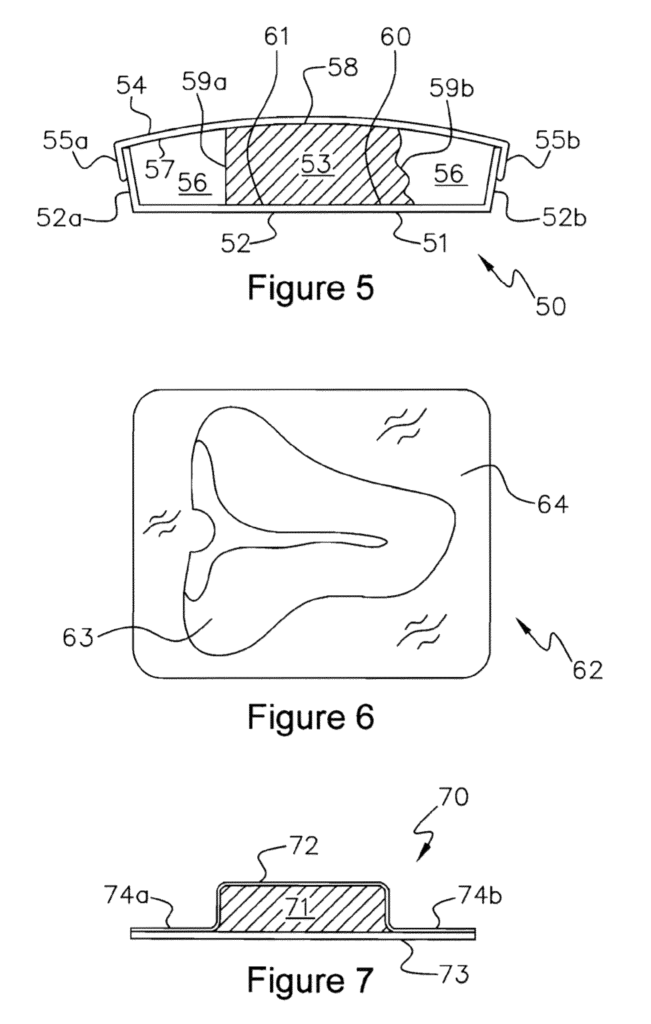
Click here to view the patent on Google Patents.
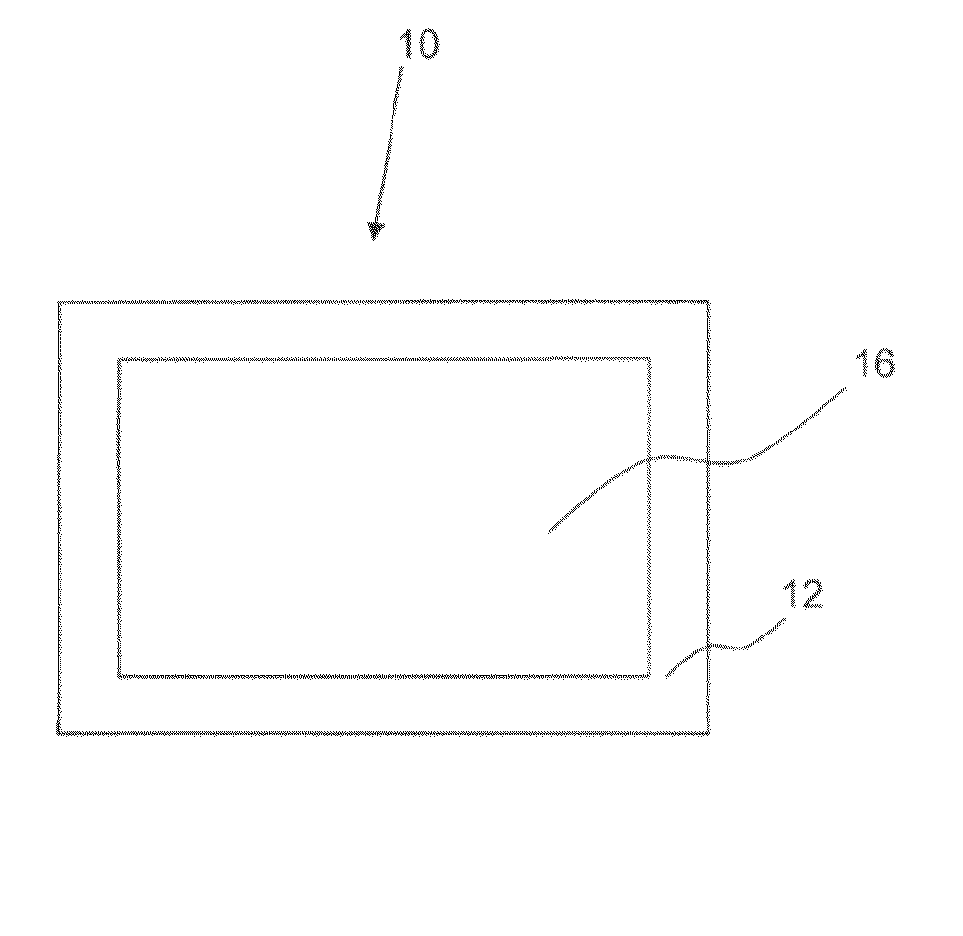
Leave a Reply